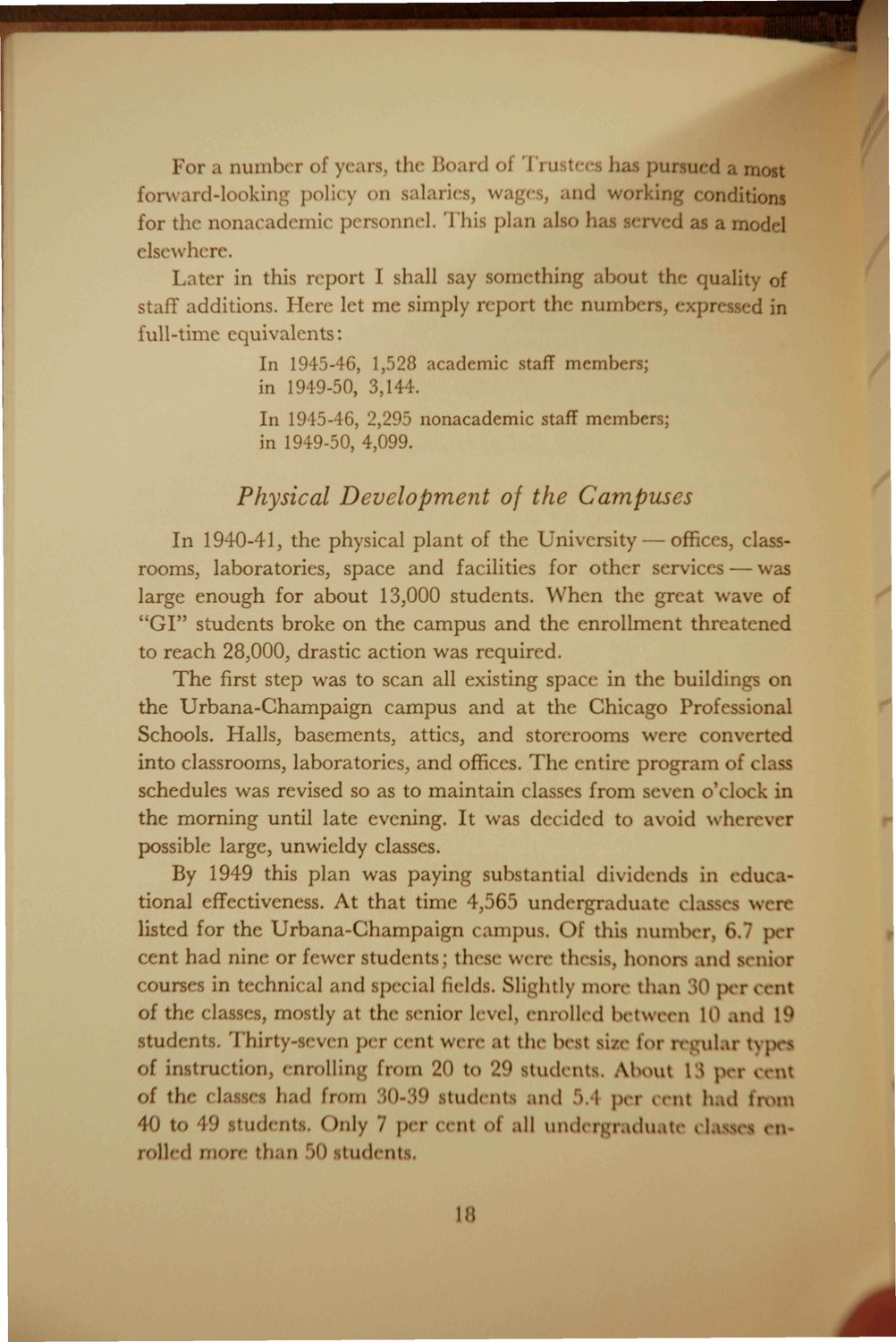| |
| |
Caption: Book - Four-Year Report of UI President (1950)
This is a reduced-resolution page image for fast online browsing.

EXTRACTED TEXT FROM PAGE:
LLfiflflL For a number o f ) irs, the Hoard oi Tru tees h a i pursu I a most forward-looking policy on salaries, w. and working conditions for tin* nonacademic personnel. Tins plan also has served as a model elsewhere. Later in this report I shall say something about the quality of staff additions. Here let me simply report the numbers, expr sed in full-time equivalents: In 1945-46, 1,528 academic staff members; in 1949-50, 3,144. In 1945-46, 2,29 nonacademic staff members; in 1949-50, 4,099. Physical Development of the Campuses In 1940-41, the physical plant of the University — offices, classrooms, laboratories, space and facilities for other services — was large enough for about 13,000 students. When the great wave of " G I " students broke on the campus and the enrollment threatened to reach 28,000, drastic action was required. T h e first step was to scan all existing space in the buildings on the Urbana-Champaign campus and at the Chicago Professional Schools. Halls, basements, attics, and storerooms were converted into classrooms, laboratories, and offices. T h e entire program of class schedules was revised so as to maintain classes from seven o'clock in the morning until late evening. It was decided to avoid wherever possible large, unwieldy classes. By 1949 this plan was paying substantial dividends in educational effectiveness. At that time 4,565 undergraduate cl; were listed for the Urbana-Champaign campus. Of this number, 6.7 per cent had nine or fewer students; these were thesis, honoi and senior courses in technical and special fields. Slightly more than 30 percent of the classes, mostly at the senior level, enroll 1 between 10 and 19 Students. Thirty-seven per < eiit \v< re at the l>est si/e for i jiilar t\ c% of instruction, enrolling from 20 to 29 students. About 13 per eent of the (lasses had fl m 'M)-'M) students and 5.1 per eent h 1 irom 40 to I students. Only 7 p i cent of all undergraduate dan s en- Mi
| |